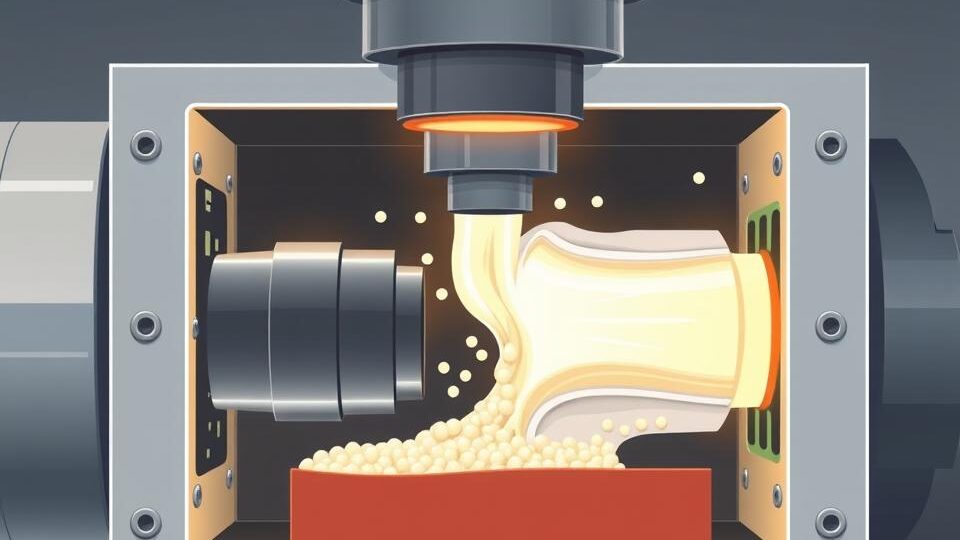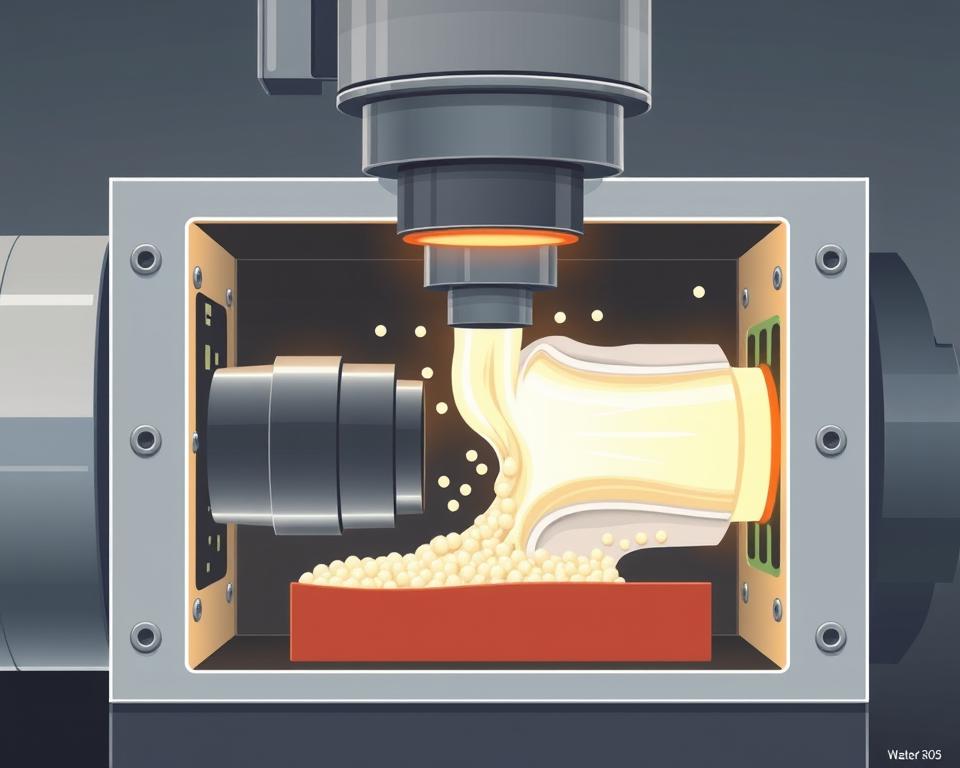
What Is Plastic Mold Vacuum Assist Feature
Guide to Engaging China Injection Molding Suppliers
Well, the major meeting has just concluded. your new product has been approved, the schedule is tight, and funding is, to put it mildly, limited. Then a voice—perhaps your manager or the CFO—drops the line that gives every project manager a shock: “We should look at sourcing this from China.”
Naturally, you agree. On paper, it’s logical. Savings can be substantial. But your mind is already racing. You know the rumors, don’t you? The quality disasters, the communication black holes, the shipment that shows up three months late looking nothing like the sample. It feels like walking a thin line between big savings and total project failure.
However, here’s the reality. Sourcing plastic mold company can be a calculated project. It’s no different from any structured project. And like any project, it succeeds or fails based on the process you follow. It’s less about finding the absolute cheapest quote and more about finding the right partner and managing the process with your eyes wide open. Forget the horror stories. Let’s walk through a real-world playbook for getting it right.

Step One: Do Your Homework
Before you even whisper the word “supplier” or open a browser tab to Alibaba, you need to get your own house in order. In fact, most overseas manufacturing headaches stem from a vague or incomplete RFQ. Don’t assume a remote factory can guess your needs. A vague RFQ is like telling a contractor to bid on “a house.” The responses you get will be all over the map, and none of them will be useful.
Your RFQ should be bulletproof—clear, detailed, and unambiguous. It’s the cornerstone of your entire effort.
So, what goes in it?
Start with your 3D design files. These are non-negotiable. Use standard formats such as STEP or IGS to ensure compatibility. This is the authoritative CAD geometry.
Yet 3D models don’t cover everything. Include precise 2D engineering drawings. This is where you call out the stuff that a 3D model can’t communicate. Examples include tolerances (e.g., ‘25.00±0.05 mm’), material grade, surface finish requirements, and functional callouts. If a specific surface needs to be perfectly smooth for a seal, or a particular hole diameter is vital for an assembly, your 2D drawing needs to shout it from the rooftops.
Next up, material. Don’t label it simply “Plastic.” Nor just “ABS.” Be explicit. If you need SABIC Cycolac MG38 in black, say exactly that. Why so detailed? Because plastic grades vary by the thousands. Defining the exact material guarantees the performance and appearance you designed with what is plastic mold.
They can offer alternatives, but you must provide the initial spec.
Don’t forget the commercial info. State your EAU. A supplier needs to know if they’re quoting a tool that will make 1,000 parts in its lifetime or 1,000,000 parts a year. The tool design, the number of cavities, and the price per part all hinge on this number.
Hunting for the Best Supplier
Okay, your RFQ package is a work of art. now, who do you send it to? Online sourcing is global but crowded. It’s easy to find a supplier; it’s hard to find a good one.
You’ll probably kick off on Alibaba or Made-in-China. They let you survey dozens of suppliers quickly. Treat them as initial research tools, not final solutions. You’ll want to quickly build a list of maybe 10 to 15 companies that look promising.
Still, you must dig deeper. Perhaps hire a local sourcing specialist. Yes, they take a cut. But a reputable agent brings pre-screened factories. They bridge language and cultural gaps. On your first run, this is like insurance. Think of it as insurance for your project timeline.
Also consider trade fairs. If you have the travel budget, attending a major industry event like Chinaplas can be a game-changer. Meeting onsite is unbeatable. Hold samples, talk shop, and gauge professionalism firsthand. Also, leverage the tried-and-true referral network. Tap your professional contacts. A solid referral can be more valuable than any ad.
Sorting the Contenders from the Pretenders
Now you have your long list of potential suppliers and you’ve sent out your beautiful RFQ package. estimates roll in. Some will be shockingly low, others surprisingly high. Now, sift through and shortlist 2–3 reliable candidates.
How to proceed? It blends technical checks with intuition.
Begin with responsiveness. Are their replies prompt and clear? Is their English good enough for complex technical discussions? But the key: do they probe your RFQ? Top vendors will critique and inquire. “Have you considered adding a draft angle here to improve ejection?” or “We see your tolerance requirement here; our CMM can verify that, but it will add to the inspection time. Is that acceptable?” That’s a huge positive sign. It proves their expertise and involvement. A “Sure, no issues” vendor often means trouble.
Then confirm their machinery specs. Request their machine list. Seek samples or case studies of comparable projects. If you’re making a large, complex housing, you don’t want a shop that specializes in tiny gears.
Finally, inspect the factory. This is not optional. You would never hire a critical employee without an interview, so why would you send tens of thousands of dollars for a tool to a company you’ve never truly vetted? You can either go yourself or, more practically, hire a third-party auditing firm in China to do it for you. They perform a one-day factory inspection. They will verify the company is real, check their quality certifications like ISO 9001, assess the condition of their machinery, and get a general feel for the operation. It’s the best few hundred dollars you will ever spend on your project.
Transforming CAD into Real Parts
After picking your vendor, you’ve negotiated the price and payment terms—a common structure is 50% of the tooling cost upfront to begin work, and the final 50% after you approve the first samples. Now the process kicks off.
Your supplier’s first deliverable is a DFM analysis. DFM means Design for Manufacturability. This is your supplier’s formal feedback on your part design. The report calls out sink-risk zones, stress-causing corners, and draft angle gaps. Comprehensive DFM equals a top-tier supplier. It becomes a joint effort. Together, you tweak the design for best manufacturability.
Once the DFM is approved, they’ll start cutting steel to make your injection mold tool. A few weeks later, you’ll get an email that will make your heart beat a little faster: “T1 samples have shipped.” These are your initial mold shots. They are your moment of truth.
T1 parts usually require adjustments. This is normal! There will be tiny imperfections, a dimension that’s slightly out of spec, or a blemish on the surface. You’ll provide detailed feedback, they’ll make small adjustments (or “tweaks”) to the tool, and then they’ll send you T2 plastic mold in China samples. It could require several iterations. Plan for this loop in your schedule.
Eventually, you will receive a part that is perfect. It matches all specs, has a pristine finish, and works as required. This becomes the “golden sample.” You formally approve it, and this sample is now the standard against which all future mass-produced parts will be judged.
Final Steps to Mass Production
Receiving the golden sample seems like victory, but you’re not done. Now comes full-scale production. How can you keep part #10,000 matching your golden sample?
Implement a robust QC plan. Often, you hire a pre-shipment inspection service. Again, you can hire a third-party service. For a few hundred dollars, they will go to the factory, randomly pull a statistically significant number of parts from your finished production run, and inspect them against your 2D drawing and the golden sample. They’ll send you a detailed report with photos and measurements. Only after you approve this report do you authorize the shipment and send the final payment. This audit shields you from mass defects.
Don’t forget shipping details. Clarify your Incoterms. Are you on FOB terms, where they load and you take over? Or EXW, where you handle everything from their gate? These choices hugely affect landed cost.
Overseas sourcing is a marathon. It hinges on strong supplier relations. See them as collaborators, not vendors. Transparent dialogue, respect, and process discipline win. It’s a challenging project, no doubt. But with this roadmap, you can succeed, achieve savings, and maintain quality. You’re ready.